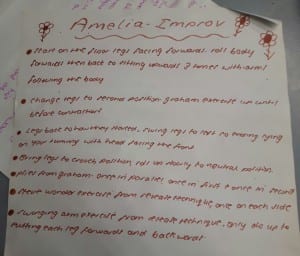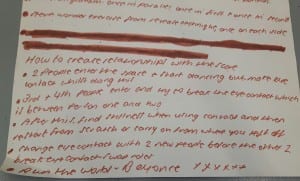I never considered the audience as being part of the improvisation, however the reading and the practice made me think differently. When reading Landscape of the Now it made me question why do we need to have a relationship with the audience? And how does it influence us? Taking these questions into the practice, helped create a relationship with the audience. Whether that was with:
– Eye contact
– The audience influencing my movements
– Doing movements that I think they will like
– Inviting or refusing the audience to see what I am doing
Another thing that stood out for me was what Steve Paxton said ‘You have to reserve the babbling for later (Paxton laughs), when everybody’s ready, or at least tired of your slowness and need something else’. I feel this aided me to start of slow and not to burst into fast motions when entering the space. I felt calm and I often allowed brief stillness’, therefore I could see what was happening around me and I could maybe bring something to the piece.
Music motivates me, however I think it can motivate me too much when improvising. All moves seem to flow to the music, and I find it difficult to work against it. When the music was slow and flowing, I would try and fit the rhythm. However, I had to do the complete opposite such as: jumps or sharp fast movements. After a while I got the hang of it, and I feel this will benefit me for future improvisation sessions.
Bibliography
De Spain, Kent. (2014) Landscape of the Now. New York: Oxford University Press.

